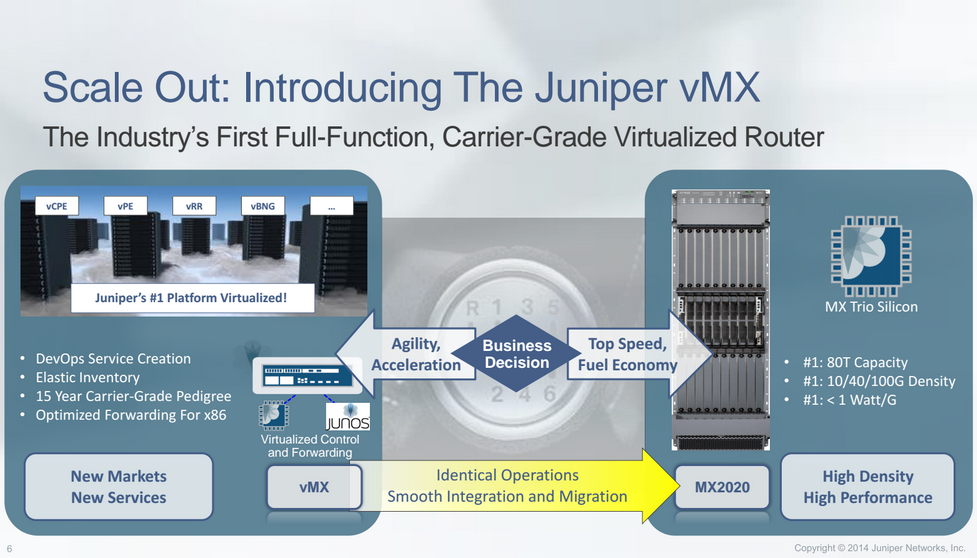
Juniper said it expects customers will combine the new vMX with its existing physical router portfolio in a common operations model. The virtualized MX implementations bring agility in deployment, scalability and service flexibility, while the physical version powered by the company's proprietary chipsets will deliver highest performance. In particular, the vMX enables new service creation and delivery models by reducing the risks and costs associated with a hardware-centric service roll-out. Service providers with MX edge routers deployed in their networks can more cost effectively expand the reach of the network by leveraging x86. With the vMX, carrier-grade routing can be deployed in the time it takes to spin up a virtual machine, scaled elastically with virtual capacity, and if the need arises, migrated to the high-performance physical MX Series platforms for high-volume workloads.
"Juniper Networks' heritage is rooted in its willingness to challenge the status quo. Today, Juniper is once again redefining the industry by giving customers the freedom to leverage the benefits of both physical and virtual networking. How committed are we? We've virtualized our number-one selling routing platform so that our customers can increase service satisfaction, improve brand value and protect their profit margins. That's how much we believe in our customer's success," said Rami Rahim, executive vice president of Juniper Development and Innovation, Juniper Networks.
"AT&T is testing vMX for use in its software-defined network architecture. With the rapid pace of innovation required to meet increasing customer demands, our industry needs to shift network infrastructures from hardware-centric to software-centric such that the network behaves as flexibly as the cloud. AT&T's Domain 2.0 initiative embodies this shift," stated Susan Johnson, senior vice president of Global Supply Chain, AT&T.
http://newsroom.juniper.net/press-releases/juniper-networks-redefines-networking-industry-with-first-carrier-grade-virtual--nyse-jnpr-1153458
- Juniper first launched its MX platform in 2006.
- In October 2013, Juniper announced line-card enhancements and a new switch fabric for its SDN-ready, MX Series 3D Universal Edge Router portfolio. The upgrades significantly expand system capacity, subscriber bandwidth and service performance.
The new line cards increase per-slot bandwidth up to 520 Gbps and offer hardware support for as many as 128,000 subscribers, enabling cost-effective subscriber concentration. The new switch fabric module more than doubles the capacity of several key MX 3D platforms, including the widely deployed MX960 and enhanced service cards for the entire MX Series portfolio. These new service cards enable up to three times the per-slot capacity and up to four times the service density of similar modules offered by other vendors.
The enhancements are compatible with tens of thousands of MX Series 3D Universal Edge platforms deployed by service provider, cable and enterprise networks globally. The upgrade path supports SDN capabilities, including those powered by Juniper’s Contrail SDN controller.











